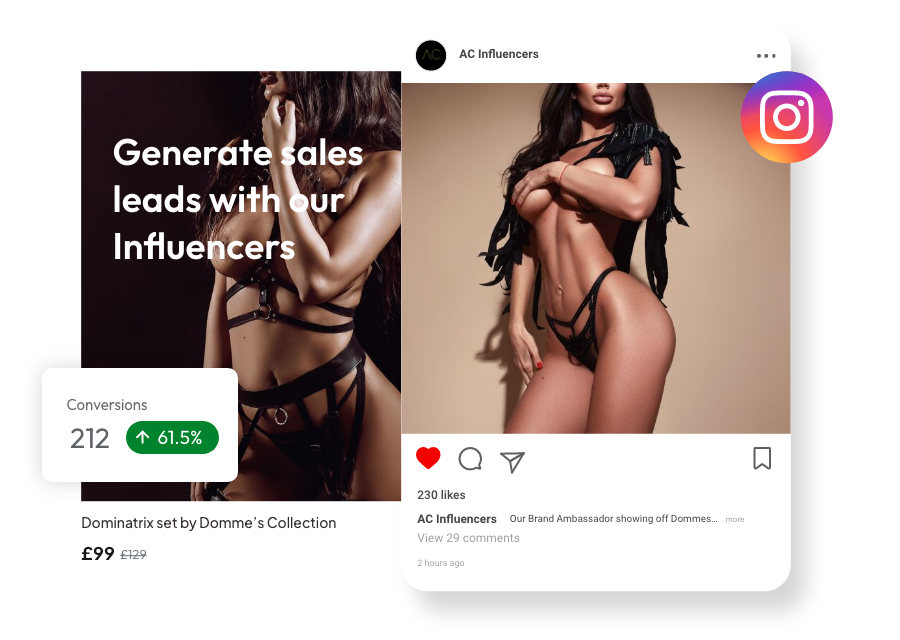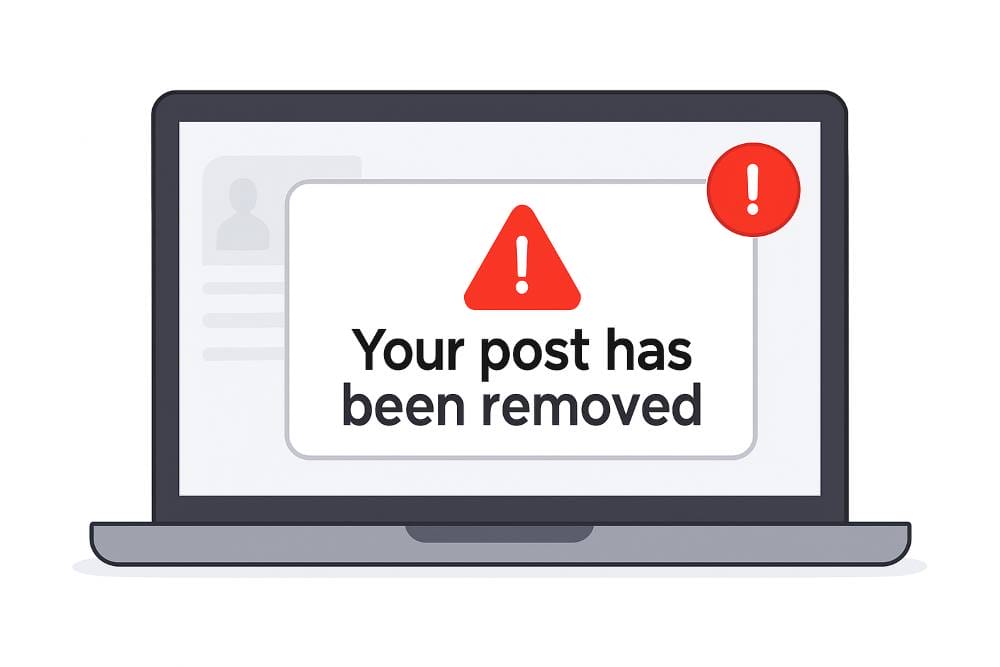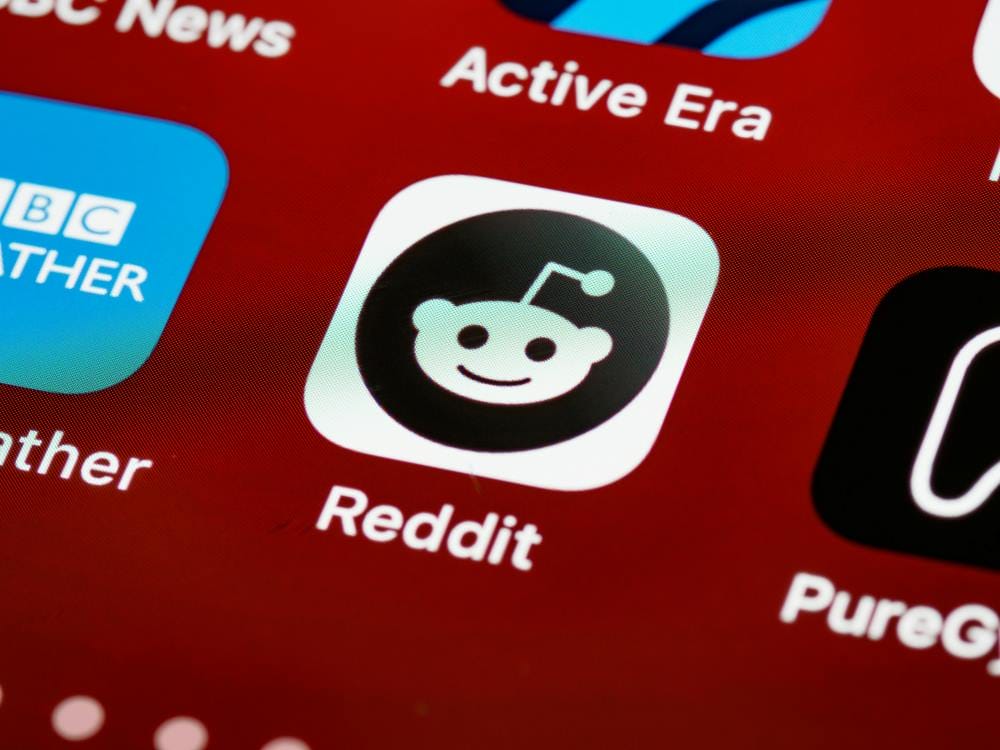Social Media Marketing Strategies for Adult Sites

There are many adult businesses out there that are failing on social media and claiming that it doesn’t work. Well, they’re wrong.
The reason they’re failing is quite simple: they’re applying mainstream strategies to platforms that treat adult content very differently. Algorithms, moderation systems and ad restrictions mean you can’t exactly rely on the same growth techniques as regular brands.
As adult social media marketing specialists, we’ve put together a helpful guide on how adult brands can build a social strategy that lasts. We’ll show you how to pick the right platforms, work within their rules, and turn engagement into measurable growth.
Contents:
- Pick the Right Platforms
- Understand (and Work With) Platform Policies
- Create High-Performing Content That Won’t Get You Banned
- Humanise the Brand
- Collaborate with the Right Influencers
- Build Private Communities
- Measure What Matters (And Optimise)
1) Pick the Right Platforms
Your platform choice shapes how visible you can be and, of course, how long you stay that way. Each platform has its own limits, audience, and moderation threshold, so the aim isn’t to be everywhere. Instead, you should aim to build where you can post consistently without risking account loss.

The best platforms for adult businesses are:
Twitter (X) remains the most permissive of the mainstream platforms. Explicit visuals are allowed when labelled correctly, making it ideal for adult creators, networks, and brands that rely on visual engagement. It also supports link-sharing, event promotion, and collaborations, but performance now depends on engagement over followers. This means that consistent replies and audience interaction matter more than volume posting.
Reddit is the next most valuable channel for adult brands, though it requires a different approach. Its niche-based communities (subreddits) make it effective for discovery and audience trust, especially for educational or discussion-driven content. Success depends on participation: you need to post in relevant communities and contribute before you promote.
Instagram and TikTok can still be valuable, but they require brand-safe positioning. You’ll get flagged if you post explicit visuals or language, so shift the focus to lifestyle: brand stories, team culture, educational posts, or product quality. They’re awareness channels, not sales tools — ideal for building legitimacy and trust.
Snapchat is suited for temporary content and private communication, such as limited-time offers, VIP previews, or event updates. It isn’t for long-term growth, but it can be useful for retaining customers who’ve already opted in elsewhere.
OnlyFans and Fansly work best as monetisation channels, not traffic generators. They should integrate with your public-facing content on Reddit and Twitter, acting as conversion layers rather than awareness tools.
As you might have guessed, porn networks and creators perform best on X and Reddit; retailers gain steady visibility from Instagram and TikTok, as well as content-driven SEO; agencies rely on brand-safe awareness through Instagram, X, and private channels. Choose two or three platforms and master them before expanding. Spreading across too many networks is tempting, but it’s often the reason why most brands lose consistency and audience trust.
2) Understand (and Work With) Platform Policies

Every platform has its limits… and ignoring them is the fastest way to lose an account. You don’t need to agree with the rules, but you do need to design within them. A compliant, layered strategy will always outlast one that pushes boundaries for short-term reach.
Start with the basics: label sensitive content correctly, use age gates where possible, and keep your profile copy clean. Many accounts are flagged not because of posts, but because of what’s written in bios, pinned tweets, or captions. Avoid explicit phrasing on restrictive platforms… instead talk about “intimacy,” “wellness,” or “connection” instead of direct sexual terminology. It’s a simple shift in language, yes, but it can make a major difference to longevity.
Keep your content ecosystem separated. Use platforms like Instagram, TikTok and Pinterest for lifestyle, education, and storytelling, and reserve explicit or adult-specific material for Twitter (X), Reddit, and your gated platforms. This “dual layer” approach lets you grow visibility while staying compliant. Just make sure your links lead to brand-safe landing pages, not deep links to explicit content.
Finally, document everything. Maintain a shared reference of approved visuals, captions, disclaimers, and safety copy that your team or creators can use. Doing so will save time, protect your profiles, and keep the brand consistent across channels.
If you’re targeting UK or EU audiences, review our Online Safety Act overview. It explains how to adapt pre-login visuals and age-verification messaging to align your social presence with current compliance standards.
3) Create High-Performing Content That Won’t Get You Banned
Every successful social strategy is focused on visibility, all while avoiding the red flags that trigger removals or shadowbans. The trick is to focus on intent: what value does your post give the viewer?
Take a look at this TikTok post from Ann Summers below.
@annsummersofficialThe toy room is making a lot of sense ♬ original sound – Ann Summers
As you can see, it manages to be cheeky and on-brand without crossing any content boundaries. Instead of showing anything explicit, the video gives viewers a playful peek inside the Ann Summers headquarters, with some subtle product placement thrown in.
This leads us to the three safe buckets your content should sit within (for the more restrictive platforms like Instagram and TikTok):
Education. Inform, don’t shock. Use short explainers, comparison carousels, or tasteful product breakdowns. Some examples might be: “Lube 101,” “Beginner toy safety,” or “The best sex toys for couples.” This builds authority while staying brand-safe.
Lifestyle & Storytelling. Behind-the-scenes content, creator diaries, or day-in-the-life features work well for humanising the brand. You could focus on your workspace, design process, or event prep, rather than anything explicit. It gives people context and credibility.
Interactive content. Polls, Q&As, and AMA formats invite audience participation without breaking policy. Use them to gather feedback, gauge interest, or test new products. Engagement from these posts also boosts organic visibility across most algorithms.
When producing content, focus on the benefits of whatever it is you’re promoting, such as comfort, design quality, or privacy, rather than sexual performance. Use native formats (threads on X, carousels on Instagram, duets on TikTok) and always link back to a safe landing page, like a blog or FAQ, instead of explicit media. That one extra step can make all the difference between growth and, well, removal.
Looking for more ways to boost your brand’s online presence? Check out our list of 2025’s best marketing strategies for adult sites.
4) Humanise the Brand

Most users engaging with adult brands do so on the down low. They scroll, watch, maybe click, but rarely do they ever comment or share. It’s not that they’re disinterested… It’s simply a matter of privacy. The more human your brand feels, the safer that engagement becomes. People are far more likely to buy, subscribe or follow when they sense real people behind the logo.
Start small. Feature the people who make the brand work. This could be the founder, a popular model, or even your support team. A short clip explaining the business, or a behind-the-scenes story about product testing, can do more for credibility than a month of product promos.
Be responsive and conversational. Whether it’s comments, DMs, or email, make replies personal and fast. Use real names (or consistent brand personas) and keep the tone warm and professional. Every message reinforces that there’s a legitimate team behind the content, which will do wonders for your brand.
Treat key policies as shareable content. Returns, data protection, age verification, and payment security are just some examples. Pin them, reshare them quarterly, and frame them around user reassurance (“Here’s how we keep you safe and discreet”). Privacy is a big thing for your audiences, and it’s this approach that helps earn trust.
5) Collaborate with the Right Influencers

Influencer marketing remains one of the most effective (and compliant) ways to grow an adult brand online. Unlike paid ads, it doesn’t rely on restrictive approval systems, and audiences see it as genuine social proof. The trick is to run collaborations like a long-term program instead of a one-off shoutout.
Start with micro-influencers. Profiles with 5,000–50,000 followers often deliver better engagement, fewer moderation issues, and more authentic connections than big accounts. Be sure to check their audience demographics, previous content flags, and tone before partnering. Relevance matters more than reach, after all.
Focus on co-created content rather than static product placements. Host live Q&As, Reddit AMAs, or behind-the-scenes walkthroughs. Tutorials, honest reviews, and side-by-side unboxings all perform well because they educate first, sell second. Always ensure the influencer posts natively to their platform for better algorithmic reach.
Prepare a compliance pack for every collaboration. Include a short guide covering what terms to avoid, approved thumbnails, safe URLs, and the right disclosure language (“#ad” or “#partnership” as required). This protects both parties and reduces the chance of post-removals or account warnings.
Need help from the experts? Learn more about our influencer marketing service and bespoke, results-driven strategies.
6) Build a Private Community

Whether it’s due to stigma, algorithms, or user caution, public engagement will always hit a ceiling in the adult industry. That’s why the most valuable conversations, and often the highest conversions, happen in private spaces. Communities let people engage safely, learn openly, and stay loyal long after the initial sale.
Choose your platform carefully. Reddit remains the best for semi-public engagement, especially if you manage your own branded subreddit. For more intimate spaces, Discord, Telegram, and private Facebook Groups work well… just remember to keep topics brand-safe and moderate carefully.
Give people a reason to join. Offer early product drops, VIP codes, members-only polls, or expert Q&As that shape your next release. When users feel like they have input, they invest more emotionally in the brand. The best communities grow from participation, not just content distribution.
Structure matters too. Try a simple rhythm: two educational posts per week, one discussion thread, and a live Q&A or workshop once a month. The goal is to remain consistent and offer a space that feels active, but never too overwhelming. Over time, these groups become self-sustaining ecosystems where your most valuable customers do the talking for you.
8) Measure What Matters (And Optimise)
Most adult brands still confuse visibility with success. Sure, it’s great to have a post go viral, but if it’s not driving clicks, sign-ups, or repeat engagement, then… well, what’s the point? At the end of the day, your goal is to create repeatable signals that tell you what’s working.

Visibility should be measured against effort. Track reach, impressions, and profile visits weekly, but compare them with how often you’re posting. If output goes up but visibility doesn’t, it’s often your hook, format, or timing. Experiment with new opening lines, hashtags, or even posting times, then note what makes the biggest lift.
Engagement quality is your litmus test for relevance. Likes don’t mean much… but saves, shares, comments, and DMs? They do, because they show intent and curiosity. For adult brands, pay close attention to replies that ask questions (“where can I buy this?” or “is this available online?”). That’s your sign to turn passive followers into active customers.
Traffic to owned spaces is where things start to count. Monitor link clicks to your blog, store, or link-in-bio hub, and track which posts are driving them. If you’re getting engagement but no clicks, your captions might be too playful to convert. Instead, test clearer CTAs like “read more on our blog” or “shop the full collection.”
Revenue signals are what close the loop. Use UTM codes, coupon tracking, or GA4 attribution to see where sales really begin. Social is often an assist channel… in which someone mighht see your toy unboxing on TikTok, Google it later, and buy via organic search. Recognising that path helps you justify the effort when reporting ROI.
Finally, make your analytics useful. Spend 10 minutes each week reviewing what caused spikes (a certain sound, image type, or topic) and feed that straight back into next week’s content plan. Do’t worry about measuring every little detail… You just need to know which patterns are worth repeating.
Wondering what the next step is? How about connecting your insights with content planning? For more on how to turn performance data into topic clusters, check out our 7 SEO tips to rank higher on Google.
Shall We Get Started?
If there’s one thing this guide should make clear, it’s that social success for adult brands all comes down to strategy. The platforms you choose, the tone you use, and the consistency you maintain all decide whether your brand gets buried… or builds real traction.
Start small. Post content that educates, entertains, and earns trust. Watch your metrics weekly, learn from what performs, and feed those insights back into your wider marketing plan. Over time, you’ll see the effects start to take place… those effects being higher visibility, stronger authority, and loyal followers who convert.
Ready to turn engagement into real growth? Speak with our Adult SEO team to see how your social strategy can feed into long-term search visibility, site traffic, and sales.



